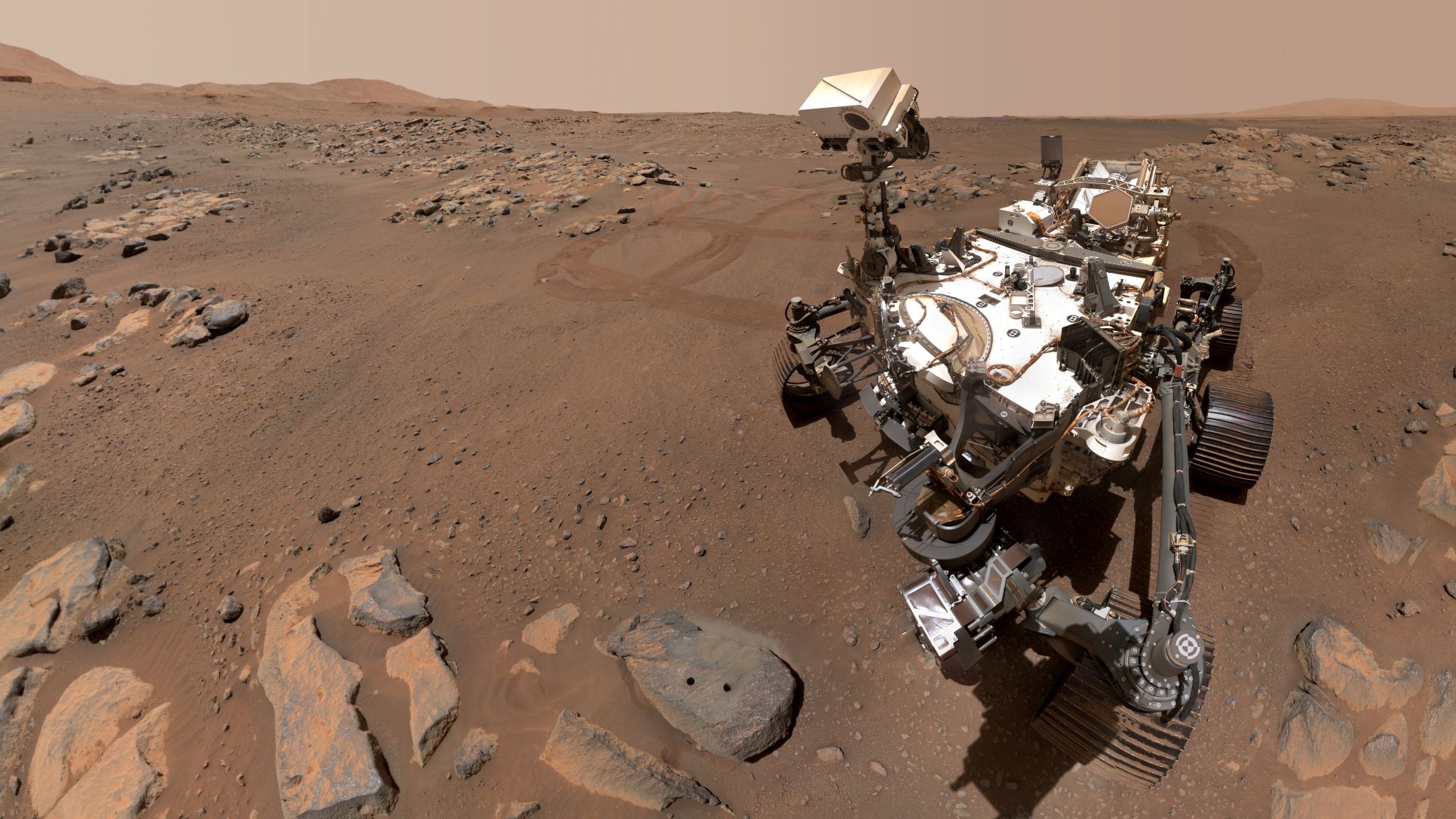Perseverance rover detects more organic carbon in search for signs of ancient life on Mars

The Mars Perseverance rover has found organic molecules on Mars similar to the chemicals that gave rise to life on Earth. (NASA/JPL-Caltech/MSSS)
On the floor of the Jezero crater, NASA’s Mars Perseverance rover has discovered signs of organic molecules, the kinds of chemicals that make up all life on Earth. It’s impossible to tell if the organic molecules came from ancient life on Mars or geological processes based on measurements the rover has conducted so far.
Yet even geologically formed organics bolster evidence for past life on Mars, because life on Earth likely got started by coalescing from naturally occurring organic molecules just like these, says Amy Williams, a University of Florida astrobiologist and one of the long-term planners on the Perseverance mission.
“Organics make up life as we know it,” Williams said. “Seeing organic carbon on Mars sets us up to understand if the building blocks for life were present on the planet in the past through the lens of how life evolved on Earth.”
Perseverance has collected multiple rock samples that are slated for return to Earth on the Mars Sample Return mission. Some of those samples include rocks altered by water, and scientists believe that a watery Mars could have supported life billions of years ago. More sophisticated tests on Earth could verify the signs of organic molecules and determine if the rock samples possess convincing evidence of past life on Mars.
In a paper published Nov. 23 in Science that was led by Eva Scheller at the California Institute of Technology, Williams and the rest of the Perseverance team shared their analysis of organic molecules at several sites on the crater floor. The rover also spotted several mineral salts that formed from the interaction of water with rocks in the crater.
Led by NASA’s Jet Propulsion Laboratory, Perseverance is studying the Jezero crater because it once hosted a large river delta that flowed into an ancient lake. That watery past makes the crater a promising site for identifying any signs of life on Mars from billions of years ago.
This is not the first time organic molecules have been detected on Mars. The Curiosity rover — which Williams works on as well — found organic carbon elsewhere on the planet in 2015. Now that Perseverance has seen similar signatures in a completely different geologic context, the evidence is adding up that organic carbon is ubiquitous on the red planet, albeit at low levels.
“Seeing a consistent story is always reassuring as a scientist,” Williams said. “Now that we’ve got an idea of what the organics are, that’s helping us hone in more on if we can link that back to a Martian biosphere or geological processes in the past.”
